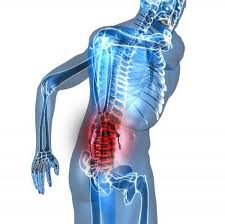 Many patients will experience back pain in their lifetime. This may vary from mild occasional pain to chronic and constant pain that can be debilitating. The first step that you and your physician will be working on is to figure out the reason and the severity of the condition that is leading to the pain symptoms. In many situations, an early evaluation and a treatment plan would limit the symptoms and help recover faster.
Many patients will experience back pain in their lifetime. This may vary from mild occasional pain to chronic and constant pain that can be debilitating. The first step that you and your physician will be working on is to figure out the reason and the severity of the condition that is leading to the pain symptoms. In many situations, an early evaluation and a treatment plan would limit the symptoms and help recover faster.
Pay Attention To Other Symptoms
The pain in the back may be associated with other symptoms like numbness, tingling, or weakness of the muscles. Some conditions can even lead to bladder or bowel problems.
In patients who experience symptoms like fever or weight loss accompanied by back pain, serious conditions like infection and cancer need to be ruled out.
Consider Your Age
When younger patients experience back pain, it is usually related to muscular issues as compared to older patients where age related arthritis constitutes the more common cause.
Other common causes of back pain include sports, motor vehicle accidents, or work related accidents.
Lower back pain often results from issues with the lumbar spine. This can include:
- Irritation or compression of the nerves of the spine
- Damaged bones or joints of the spine
- A degenerating intervertebral disc
Any time people experience pain in the back, they may develop reflex muscle spasm. This is a defensive mechanism in which the body stiffens to avoid further movement. However, sometimes the spasm is severe enough to result in pain and further accentuate the cycle of pain and spasm.
Regardless of the severity of the back pain, it is important to know that the severity of the back pain may not be an indication of how serious the underlying cause is. Many excruciatingly painful back pain experiences result from issues that can be easily managed. Regardless, you will need to see a physician to determine what is causing the chronic back pain and what can finally bring you relief.



